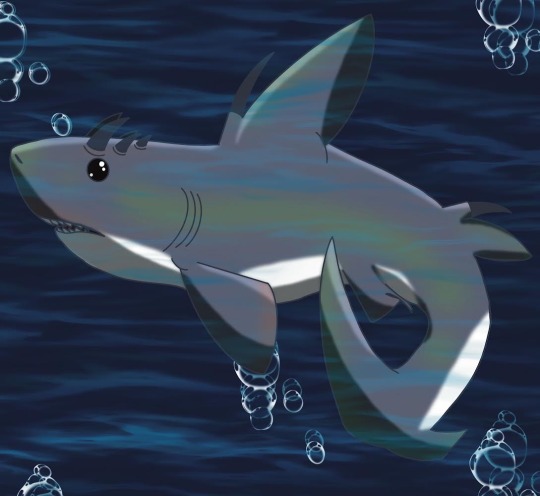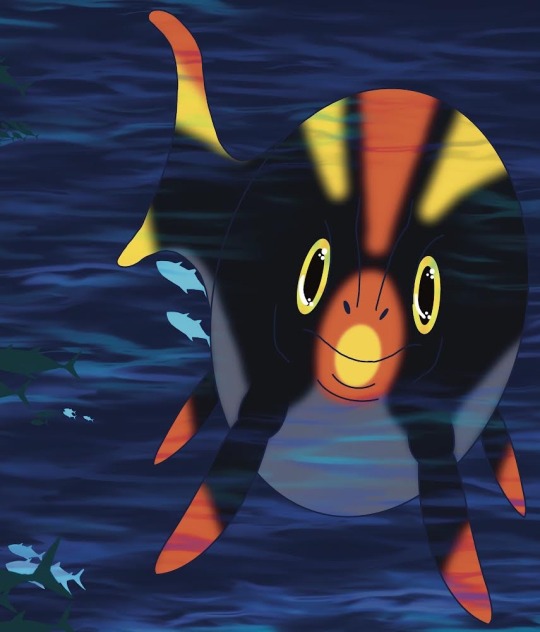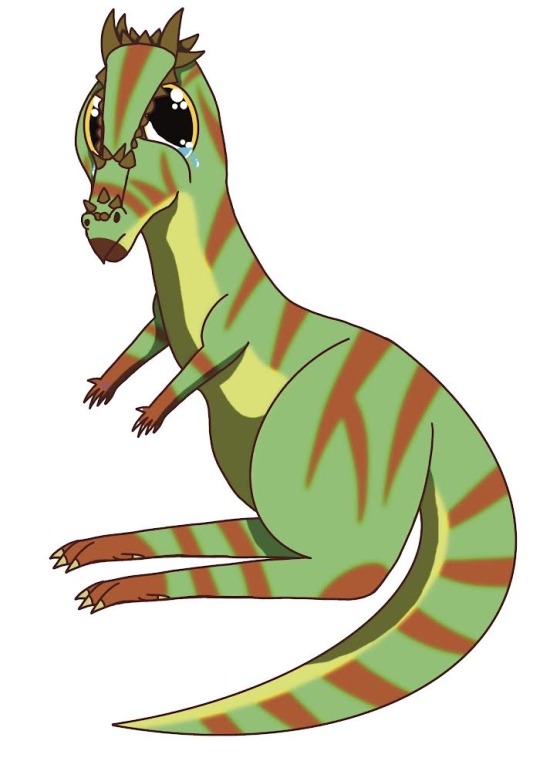Text

Art I submitted for the Prior Extinction art contest
Styracosauruses teehee
713 notes
·
View notes
Text
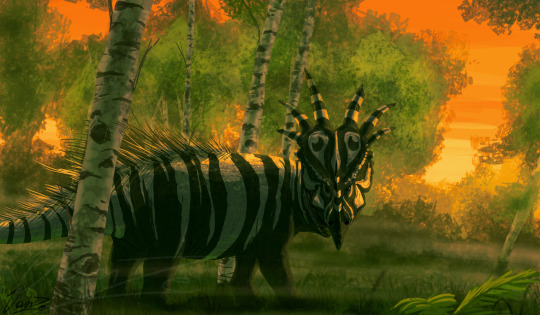
Styracosaurus in a birch forest
inspired by and based on some screenshots I took of my Styraco in Path of Titans.
1K notes
·
View notes
Text
Musankwa sanyatiensis Barrett et al., 2024 (new genus and species)
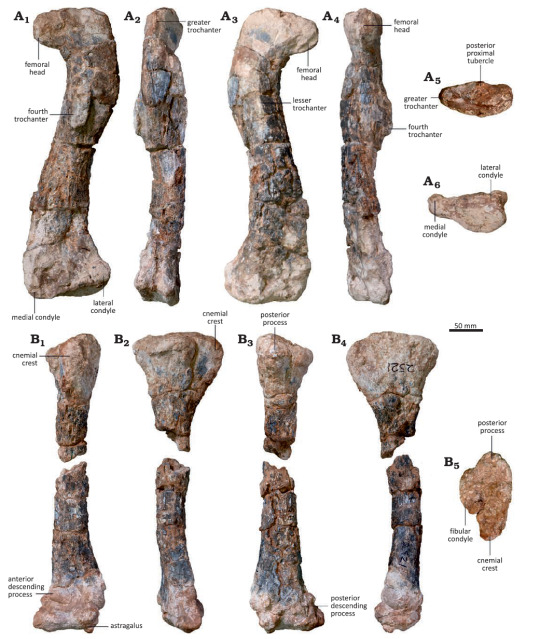
(Type specimen of Musankwa sanyatiensis, from Barrett et al., 2024)
Meaning of name: Musankwa = Musankwa [name of houseboat that researchers stayed at during field expeditions to the site where the original fossil was found]; sanyatiensis = from Sanyati River
Age: Late Triassic (Norian)
Where found: Pebbly Arkose Formation, Mashonaland West, Zimbabwe
How much is known: A partial right hindlimb.
Notes: Musankwa was an early sauropodomorph. Although sauropodomorphs famously include the often gigantic quadrupedal sauropods, early members of this group were primarily bipedal. Compared to Mbiresaurus, a slightly older sauropodomorph also known from the Pebbly Arkose Formation, Musankwa appears to have been more closely related to true sauropods.
Reference: Barrett, P.M., K.E.J. Chapelle, L. Sciscio, T.J. Broderick, M. Zondo, D. Munyikwa, and J.N. Choiniere. 2024. A new Late Triassic sauropodomorph dinosaur from the Mid-Zambezi Basin, Zimbabwe. Acta Palaeontologica Polonica 69: 227–241. doi: 10.4202/app.01100.2023
40 notes
·
View notes
Text
See him?

He is a Cistecephalus microrhinus. Enjoy your night.
69 notes
·
View notes
Text

Paleovember 2023, Maiasaura!
Living in Canada and Montana around 76 mya, Maiasaura is particularly famous for being the species that proved that dinosaurs (or at least hadrosaurs) looked after their young, hence the name 'mother lizard'. This is thanks to particularly rich bonebeds preserving nesting grounds with specimens of just about every age, giving us a strong look at the nesting habits and life cycle of the average Maiasaura.
143 notes
·
View notes
Text
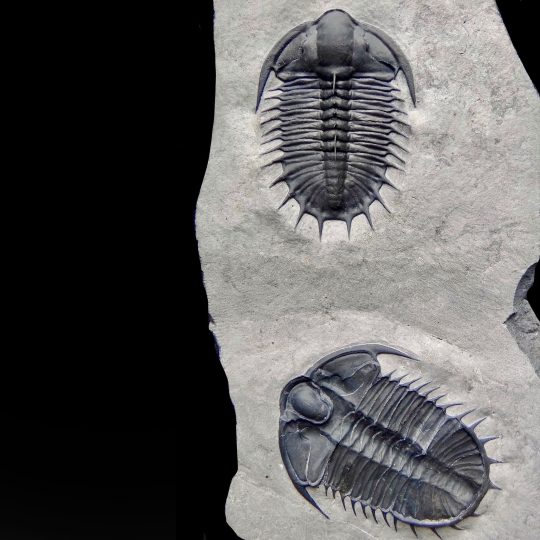
Happy Trilobite Tuesday! In recent years, the process of trilobite preparation has risen to new heights thanks to technological advancements. For example, preparing a specimen like the one pictured here—a pair of 5-in- (12.7-cm-) long, 500 million-year-old Olenoides superbus—might not have been possible a decade ago. Note the row of free-standing spines running along the axial lobe of the top trilobite. Such intricate detail can now be revealed thanks to improvements in the equipment involved in the preparation process.
320 notes
·
View notes
Photo

Dig this: ‘neglected’ dinosaur had super senses
This dino may have been a wallflower, but a CT scan of its skull reveals some hidden superpowers.
https://news.ncsu.edu/2023/11/dig-this-neglected-dinosaur-had-super-senses/
79 notes
·
View notes
Text

[ Life reconstruction of a small herd of Maiasaura by Shutterstock user Catmando. ]
"Possibly the best growth series of dinosaur bones in the world comes from the fossil beds of the Two Medicine Formation in the U.S. state of Montana.
Fossils from this formation have yielded much information about the eggs, hatchlings and early lives of a dinosaur named Maiasaura (meaning "good mother reptile").
This herbivorous hadrosaur apparently tended her eggs and raised her offspring for more than a year after hatching.
Young Maiasaura grew astonishingly fast, reaching 200–400 kilograms by their second year, and more than 3,000kg by their teens.
In comparison, cold-blooded saltwater crocodiles today weigh only about 6kg at the age of two, and reach adulthood at between 10 and 16 years old, when females weigh about 34kg and males about 115kg.
Such high growth rates in Maiasaura involved rapid lengthening and thickening of their long bones, and the process doubtlessly required much oxygen and nutrients from the blood.
The shafts of long bones of the leg, such as the femur (thigh bone) and tibia (shin bone), are supplied with blood by the principal nutrient artery, which enters the bone through a hole (called a foramen) that is visible on the surface."
Read more: "Holes in baby dinosaur bones show how football-sized hatchlings grew to 3-ton teens" by Roger S. Seymour.
251 notes
·
View notes
Text

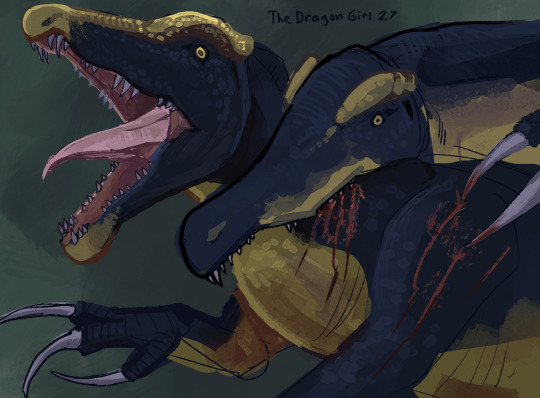

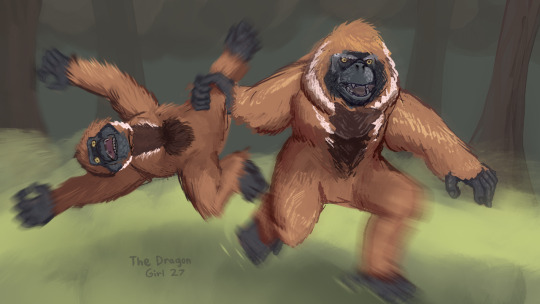
Flocking doodles
Maiasaura watching over her hatchlings
Sigilmassasaurus fighting for territory
Boreaspis swimmin round
Gigantopithecus yeeting another Gigantopithecus to assert dominance
204 notes
·
View notes
Text
A Vulcan named Stork works at the Terran adoption agency. Parents always request that he be the one to deliver their child to them.
100K notes
·
View notes
Text
Kiyacursor longipes Averianov et al., 2024 (new genus and species)

(Type specimen of Kiyacursor longipes, from Averianov et al., 2024)
Meaning of name: Kiyacursor = Kiya River runner [in Latin]; longipes = long foot [in Latin]
Age: Early Cretaceous (Aptian)
Where found: Ilek Formation, Kemerovo Oblast, Russia
How much is known: Partial skeleton of one individual including several vertebrae and limb bones. A partial neck vertebra found at the same site may belong to the same individual.
Notes: Kiyacursor was a ceratosaurian theropod. It resembles the Late Jurassic ceratosaurs Elaphrosaurus of Tanzania and Limusaurus of China in having relatively elongate lower legs and feet, suggesting that it was well adapted for fast running. The type specimen of Kiyacursor is estimated to have been 2.5 m long in total body length, but it probably had not finished growing when it died.
Although ceratosaurs are known from the Late Cretaceous of Europe and especially the Southern Hemisphere, Kiyacursor is the youngest known ceratosaur from Asia. In addition to Kiyacursor, the Ilek Formation has produced fossils of various other animals that are more characteristic of Jurassic ecosystems, including certain types of proto-salamanders, proto-crocodylians, and proto-mammals. This may indicate that what is now Western Siberia acted as a "lost world" for some Jurassic animal groups during the Early Cretaceous.
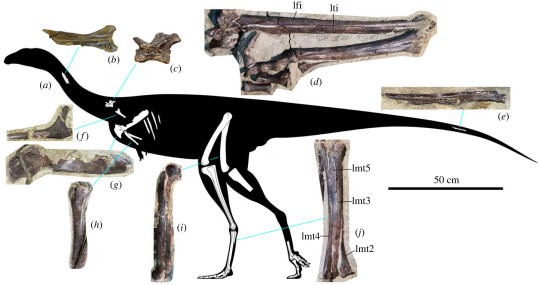
(Select bones and schematic skeletal of Kiyacursor longipes [scale bar refers only to the skeletal and not to the photographs of bones], from Averianov et al., 2024)
Reference: Averianov, A.O., P.P. Skutschas, A.A. Atuchin, D.A. Slobodin, O.A. Feofanova, and O.N. Vladimirova. 2024. The last ceratosaur of Asia: a new noasaurid from the Early Cretaceous Great Siberian Refugium. Proceedings of the Royal Society B 291: 20240537. doi: 10.1098/rspb.2024.0537
76 notes
·
View notes
Text
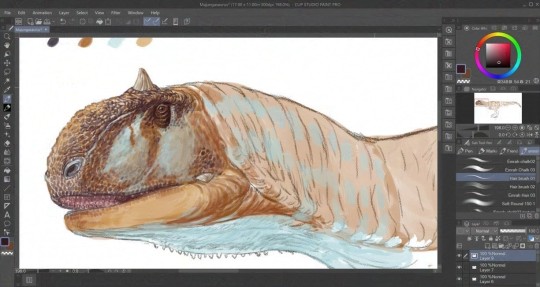
Working on a reconstruction of Majungasaurus crenatissimus as the first fully painted image I am doing in Clip Studio. It's a work in progress but I am getting a handle on this program as I fully transition away from Photoshop.
92 notes
·
View notes
Text
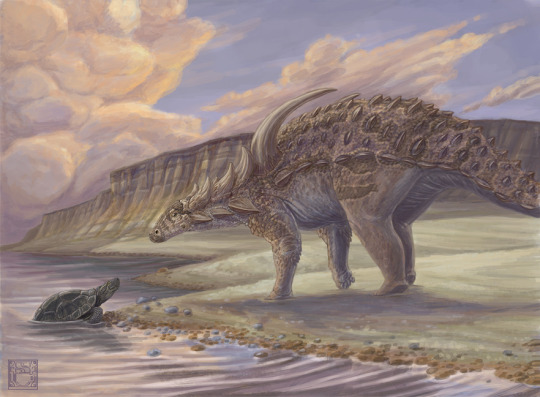
Hooray it's World Turtle Day 🐢!
Turtles aren't the only ones with an armored back, here's a hypothetical encounter between Sauropelta and Glyptops.
117 notes
·
View notes
Text

Heads up… it’s Fossil Friday! 🦕 The Museum's Apatosaurus, collected at the turn of the 20th century, was the first sauropod ever mounted. But did you know that for years, this mighty dinosaur was displayed with the wrong skull? Using incomplete remains, scientists speculated that Apatosaurus was closely related to another sauropod: Camarasaurus. As a result, a similar skull to Camarasaurus was sculpted and placed atop Apatosaurus’ body (pictured), where it remained for decades. As new research emerged, this reconstruction was updated. To this day, only one Apatosaurus has ever been found with its skull attached!
See Apatosaurus up close in the Museum's Hall of Saurischian Dinosaurs! Plan your visit.
Photo: Image no. 45615, AMNH Library
478 notes
·
View notes


